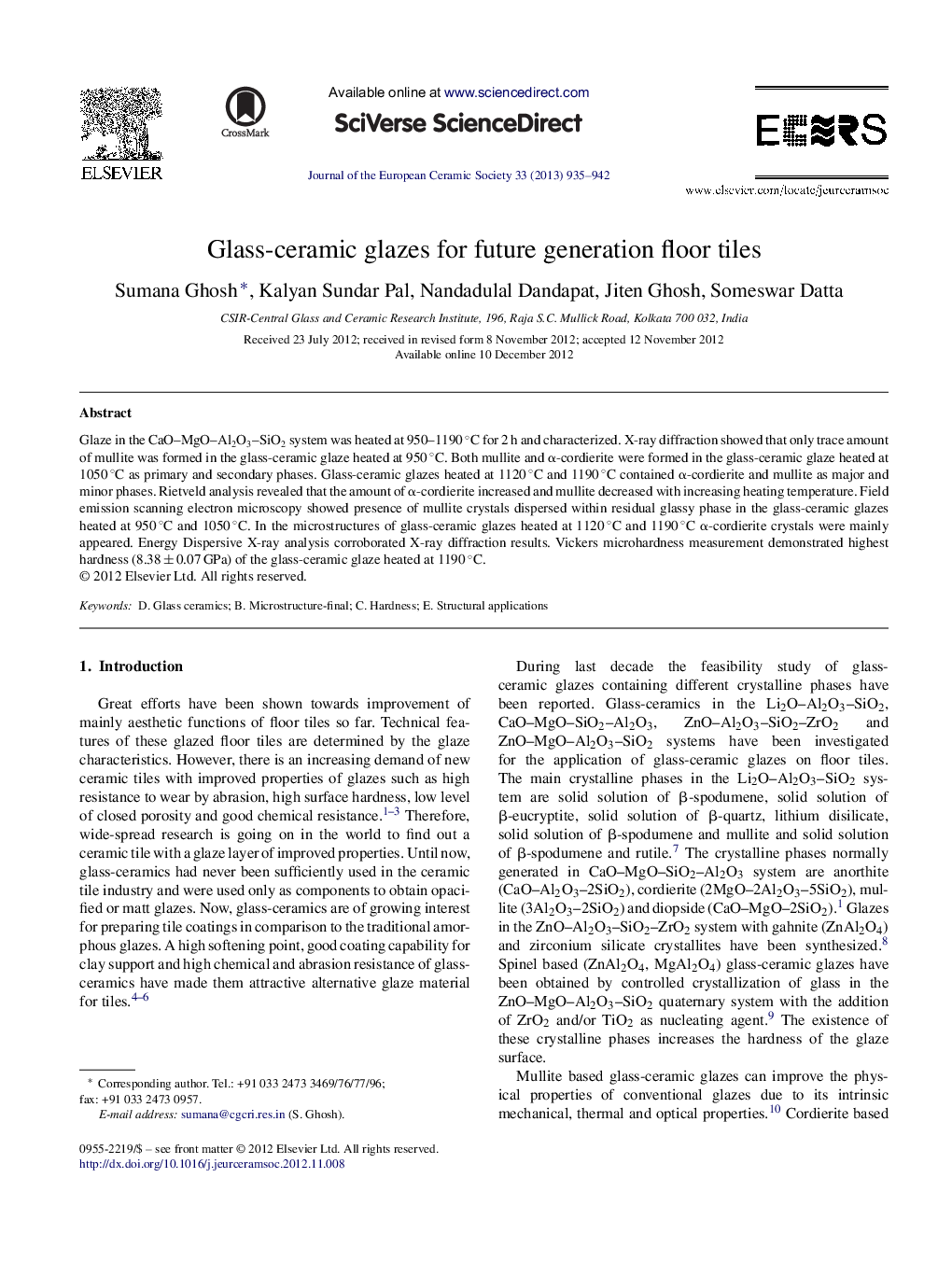| Article ID | Journal | Published Year | Pages | File Type |
|---|---|---|---|---|
| 1475856 | Journal of the European Ceramic Society | 2013 | 8 Pages |
Glaze in the CaO–MgO–Al2O3–SiO2 system was heated at 950–1190 °C for 2 h and characterized. X-ray diffraction showed that only trace amount of mullite was formed in the glass-ceramic glaze heated at 950 °C. Both mullite and α-cordierite were formed in the glass-ceramic glaze heated at 1050 °C as primary and secondary phases. Glass-ceramic glazes heated at 1120 °C and 1190 °C contained α-cordierite and mullite as major and minor phases. Rietveld analysis revealed that the amount of α-cordierite increased and mullite decreased with increasing heating temperature. Field emission scanning electron microscopy showed presence of mullite crystals dispersed within residual glassy phase in the glass-ceramic glazes heated at 950 °C and 1050 °C. In the microstructures of glass-ceramic glazes heated at 1120 °C and 1190 °C α-cordierite crystals were mainly appeared. Energy Dispersive X-ray analysis corroborated X-ray diffraction results. Vickers microhardness measurement demonstrated highest hardness (8.38 ± 0.07 GPa) of the glass-ceramic glaze heated at 1190 °C.
